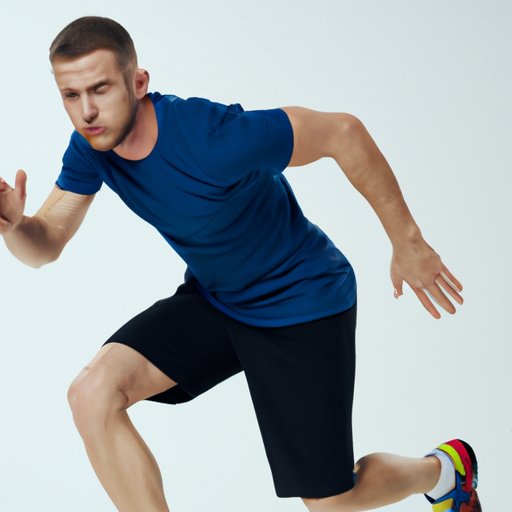Introduction
Running is one of the most popular forms of exercise as it’s easy to do and requires minimal equipment. It’s a great way to stay active, burn calories, and improve overall health and well-being. But did you know that running also works out several muscle groups? In this article, we’ll explore what muscles running works out and how to target specific muscle groups while running.
What Muscles Does Running Work Out?
Running primarily works out your lower body muscles, including your quadriceps, hamstrings, glutes, calves, and hip flexors. According to Dr. Craig Richards, an exercise scientist at the University of Newcastle in Australia, “The major muscles used during running are the quadriceps, hamstrings, and gluteus maximus. These muscles work together to propel you forward.”
The core muscles, including the abdominals and lower back muscles, also play an important role in running. These muscles help stabilize your body and maintain good posture while running. Additionally, the arms, shoulders, and chest muscles are used to help keep your body balanced and provide power when running.

How to Target Specific Muscles While Running
There are different types of running that can be used to target specific muscle groups. For example, hill running can help strengthen your glutes, quads, and calves, while sprints can help strengthen the hamstrings and hip flexors. Interval training is another great way to target different muscle groups while running. During interval training, you alternate between periods of high intensity running and low intensity running or rest periods. This helps build strength and endurance in all of the major muscle groups.
In addition to different types of running, there are also specific exercises that can be done to target specific muscle groups. For example, squats and lunges can help strengthen your glutes and quads, while calf raises and hamstring curls can help strengthen your calves and hamstrings. Plyometric exercises like box jumps and burpees can also be used to strengthen your muscles for running.
Benefits of Strengthening Muscles Used for Running
Strengthening the muscles used for running can have numerous benefits. First, it can help improve your performance as stronger muscles will be better able to generate power when running. According to a study published in the International Journal of Exercise Science, “Strength training has been found to enhance running performance by improving running economy and increasing maximum running speed.”
Second, strengthening the muscles used for running can reduce the risk of injury. Stronger muscles are better able to absorb shock, which can help reduce the risk of overuse injuries like shin splints and stress fractures. Finally, strengthening the muscles used for running can improve overall health and well-being. Regularly working out can help reduce stress, boost energy levels, and improve sleep quality.

Common Injury Risks When Not Strengthening Muscles Used for Running
Not strengthening the muscles used for running can increase the risk of injury. Weakness in certain muscle groups can lead to poor form and technique, which can cause overuse injuries. Additionally, overtraining certain muscle groups can lead to fatigue, which can also increase the risk of injury. Finally, failing to stretch and warm up properly before running can also increase the risk of injury.
Conclusion
In conclusion, running is a great way to stay active and improve overall health and well-being. However, it’s important to take the time to strengthen the muscles used for running in order to maximize performance and reduce the risk of injury. Different types of running and specific exercises can be used to target different muscle groups. Taking the time to strengthen these muscles can have many benefits, including improved performance, reduced risk of injury, and improved overall health and well-being.
For more information on how to strengthen the muscles used for running, please consult with a certified personal trainer or exercise specialist.
(Note: Is this article not meeting your expectations? Do you have knowledge or insights to share? Unlock new opportunities and expand your reach by joining our authors team. Click Registration to join us and share your expertise with our readers.)
